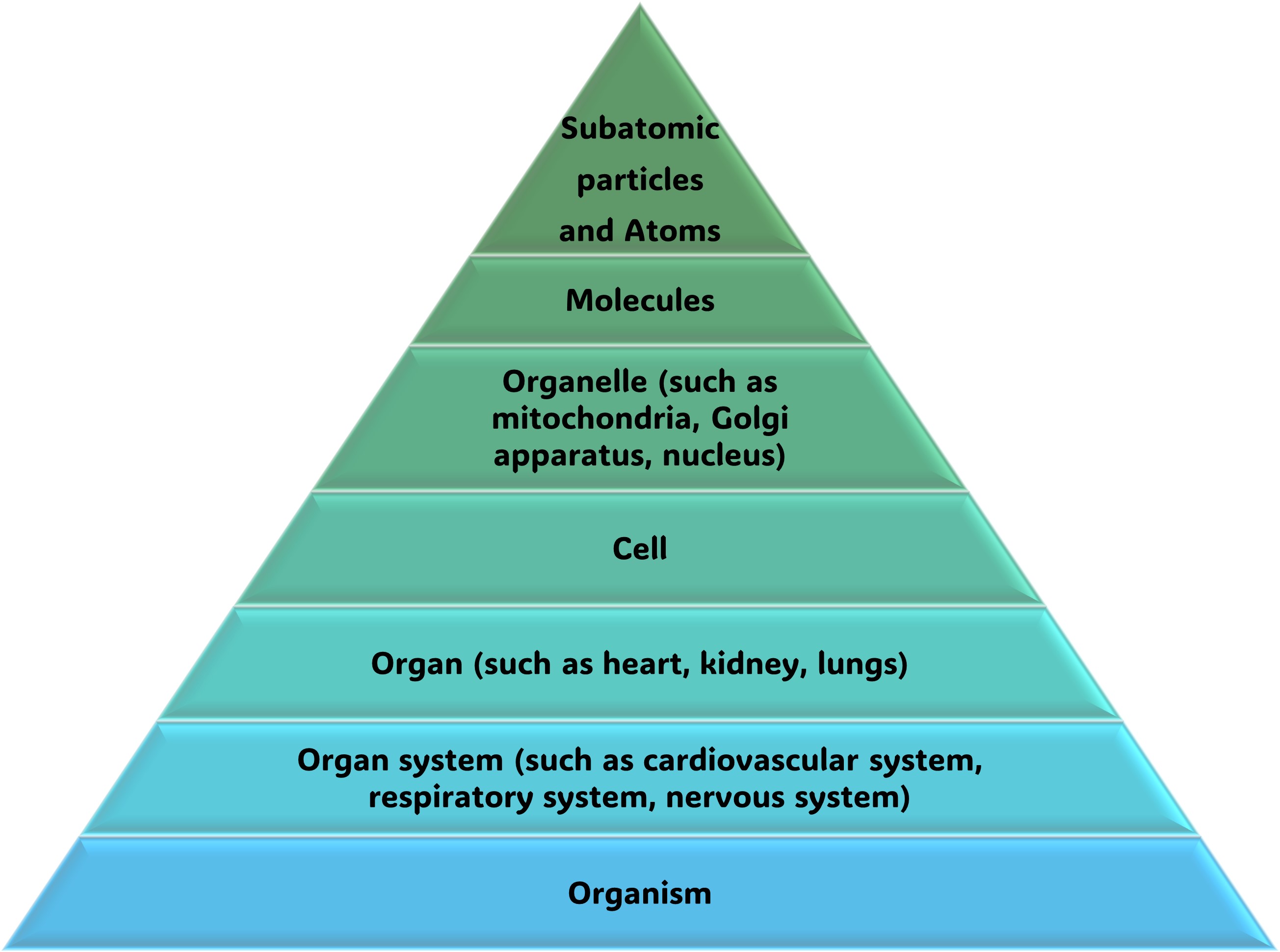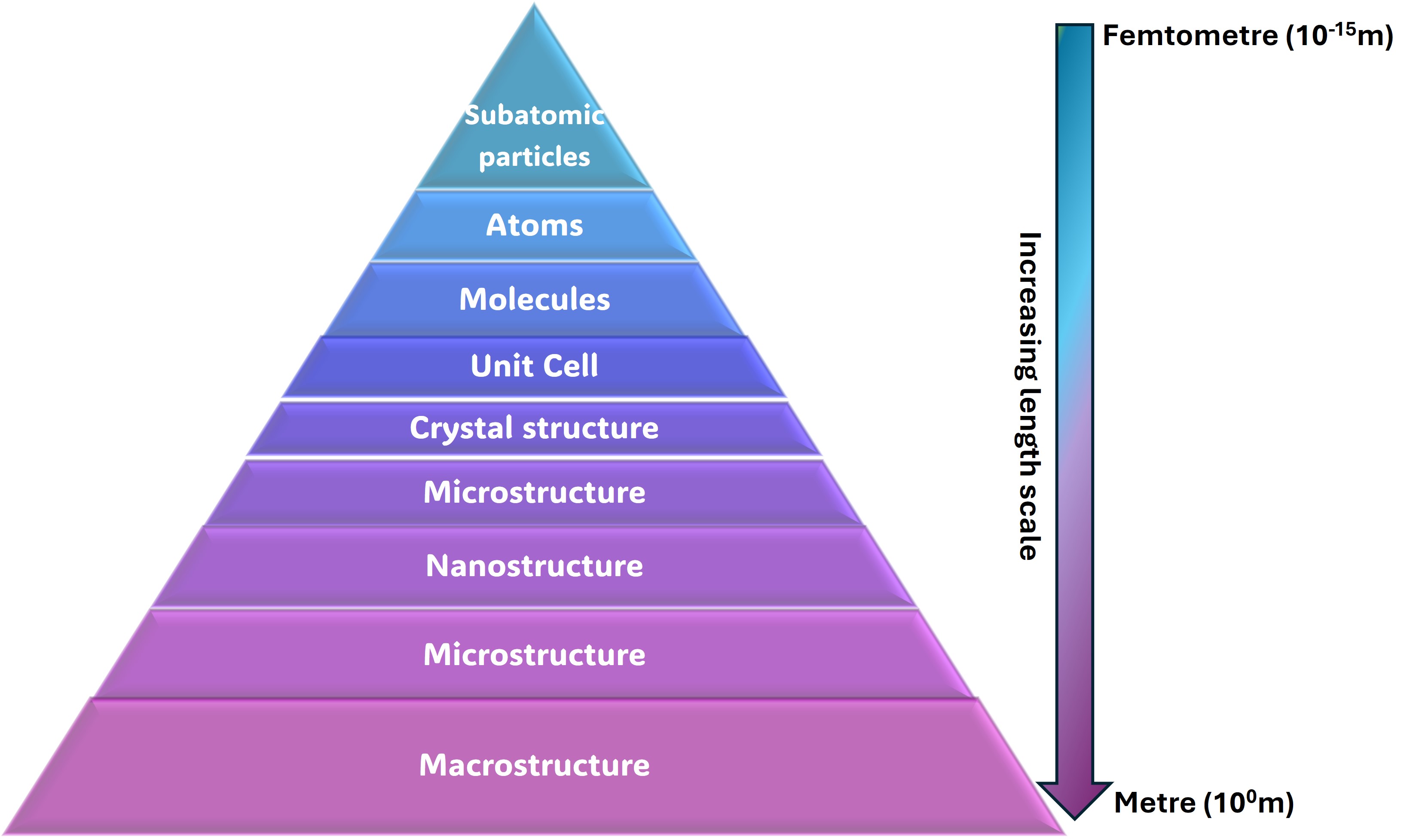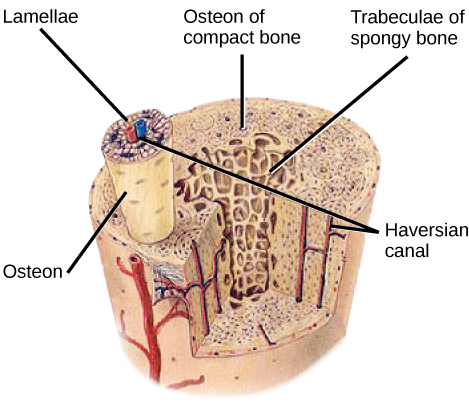

August 22, 2024

Hierarchical materials have structures organized at multiple length scales, from the very tiny (like atoms) to the larger, visible structures (like the overall shape of the material). They can be considered materials with a "nested" structure, where small parts come together to form larger parts, and those larger parts form even bigger structures.


By understanding and controlling material structures at various length scales, scientists and engineers can design materials with improved properties, leading to more efficient advanced materials.
Bone: Human compact bone has a rich hierarchical structure, ranging from microstructural to ultrastructural levels. This structure influences various physical properties of the bone, such as stiffness, slow creep, elasticity, and toughness. The pore structure (lacunae) of bone is essential for maintaining its viability and ability to adapt to mechanical stress.

Wood: Wood has a hierarchical structure, with cellulose fibers forming microfibrils, which bundle together to form larger fibers, and these larger fibers make up the cellular structure of wood.
Composite Materials: These are made by combining materials with different properties. For example, concrete (building material), fiberglass. In fiber glass, the glass fibers are embedded in a resin matrix. The fibers provide strength, while the resin holds everything together.
Nature-Inspired Hierarchical Steels: The development of this new type of steel, which has improved ductility and strength, is inspired by the hierarchical structure of byssal threads found in mussels. Byssal threads are composed of densely cross-linked protein granules for hardness and a less cross-linked matrix for extensibility. Researchers designed a multi-hierarchical steel using an inexpensive austenitic stainless steel. This design features a sandwich structure at both macro and nano scales, with a dual-phase crystal structure consisting of nano-band austenite and nano-lamellar martensite. The new steel exhibits superior mechanical properties due to the synergy of its hierarchical structure.
You may refer to this link to read about it in details.
Correlations in hierarchical materials refer to the statistical relationships between different points within the material, which reflect how properties at one scale influence or predict properties at another. These correlations can be spatial (how properties vary across space) or related to different scales (how nanoscale features affect microscale behavior, and so on).
Statistical tools such as n-point correlation functions (one such related article embedded for your quick reference) are used to understand correlations across scales.
An optimum approximation of n-point correlation functions of random heterogeneous material systemsThese functions quantify the likelihood of finding particular arrangements or patterns of material components across different length scales. By analyzing these correlations, researchers can predict how changes at one level of the hierarchy might influence properties at another level.
For instance, in porous materials, the two-point correlation function might describe how the presence of a pore at one location is statistically related to the presence of another pore at a certain distance away. These correlations can help predict the material's permeability or mechanical strength, which are essential for applications like filtration or structural components.